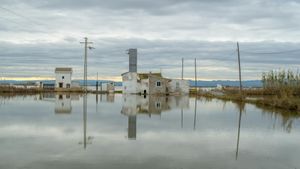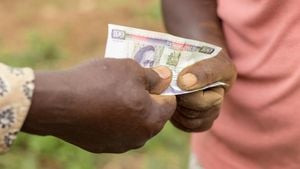Researchers recently made headlines with the discovery of a lost 18th-century colonial city buried deep within the Amazon rainforest. This groundbreaking find sheds light on the history of Portuguese colonization and the impact it had on the indigenous people and the land itself.
The city, thought to have been abandoned long ago, was located through efforts by Eduardo Neves, the lead researcher and director of the Museum of Archaeology and Ethnography at the University of São Paulo. Neves remarked, "It was abandoned, the forest took over, and the stone blocks were removed...We were able to identify the layout of the streets of this city, which was also a fascinating discovery." The ancient settlement, once marked on maps, had avoided being found until now, and its exact location remained unclear until advanced archaeological methods were employed.
This discovery is part of the Amazônia Revelada project, aiming to map archaeological sites throughout the Amazon using both cutting-edge technology and the traditional wisdom of local inhabitants. Neves expressed the project's purpose, saying, "We want to register these archaeological sites to make them part of [our] heritage and create an additional layer of protection for these territories."
Utilizing LIDAR technology has become instrumental for the researchers. This remote sensing method deploys lasers to scan the terrain and generate three-dimensional models, allowing scientists and archaeologists to visualize what lies beneath the thick forest canopy without disturbing the natural environment. LIDAR has proven revolutionary, providing clear insight where visual surveys might have failed due to dense vegetation.
The historical significance of this discovery is not just archaeological. It connects to the broader narrative of Brazil's colonial past, which began when the Portuguese explorer Pedro Álvares Cabral claimed the land for Portugal back in 1500. Over the subsequent centuries, Portugal established extensive colonial infrastructure and relied heavily on enslaved labor to extract natural resources, such as gold, coffee, and sugar, from Brazil's rich landscapes. The colonization era significantly influenced the demographic and environmental fabric of the region.
By the early 19th century, Brazil began its independence movement, which culminated in freeing itself from Portuguese rule. The remnants of this lost colonial city serve as tangible reminders of the social, cultural, and environmental transformations during these turbulent times.
While the discovery of the colonial city has historical value, it also raises questions about current conservation efforts in the Amazon, which is often seen as the lungs of the Earth. The Amazon rainforest, home to millions of species of flora and fauna, is increasingly under threat from deforestation and climate change. Recent reports indicate Brazil has taken steps to combat illegal deforestation, including significant fines against meatpacking companies found to be sourcing cattle from deforested pastures.
One of the largest meat processing companies, JBS, was fined $64 million for its actions related to cattle sourced from illegal deforestation. Companies are being urged to follow through on their pledges to eliminate environmentally damaging practices, echoing calls for enhanced environmental responsibility. The fines highlight the accountability entities face for their environmental impact, signaling greater pressure on businesses to align their practices with sustainable development goals.
The beating heart of the Amazon is not just about historical chapters now closed but also about the contemporary fight for conservation. The mixed methods of research used by initiatives like Amazônia Revelada highlight the need for collaboration between advanced technology and local indigenous knowledge, ensuring the rich cultural and ecological landscapes are recognized and preserved. The Amazon remains one of the planet's most bio-diverse and ecologically significant regions, its fate intertwined with the global struggle against climate change.
Despite the promising developments engendered by the discovery of the colonial city and the push to mitigate deforestation, enormous challenges remain. The complexity of the Amazon’s socio-environmental dynamics necessitates policies informed by science, empathy, and respect for indigenous communities, who are often the best custodians of the land. Only through such approaches can the lessons buried deep within the Amazon’s storied history guide action for its future.
This recent find and the surrounding discussions about conservation offer both hope and caution. They remind us of the urgent need to balance heritage preservation with the modern battles against environmental degradation. The Amazon, often referred to as the Earth’s lungs, plays a pivotal role not just for Brazil but for the globe. This latest discovery is more than just about history; it is about recognizing our collective responsibility to safeguard our world.



